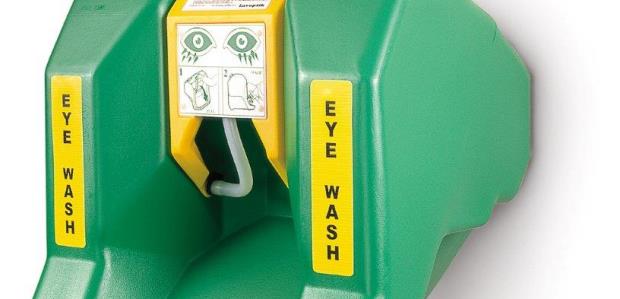
Meeting the Requirements for Emergency Equipment
Employees must be trained to hold their eyes open during the flushing process. All employees also should be trained on how to use the emergency equipment fixtures before they handle hazardous chemicals.
- By Jerry Laws
- Jan 01, 2019
For companies maintaining or considering emergency shower and eyewash stations, there are two key standards to remember. The ANSI/ISEA Z358.1-2014 American National Standard for Emergency Eyewash and Shower Equipment is an essential resource—visit ISEA's www.safetyequipment.org website to order it. This important consensus standard outlines the minimum equipment performance criteria for this equipment. It specifies flow rates, water temperature delivery, testing, and much more.
Z358.1 is the leading international standard for implementation of eyewash and shower equipment. On the standard’s page on its website, ISEA points out what a wide range of industries need to install and maintain this emergency equipment, listing "manufacturing and processing facilities, construction sites, laboratories, medical and healthcare offices, refineries and other workplaces."
The other key standard is OSHA's first aid standard, the one that explains the requirement for certain facilities in those and other industries to install shower or eyewash equipment. OSHA's 29 CFR 1910.151(c) says, "Where the eyes or body of any person may be exposed to injurious corrosive materials, suitable facilities for quick drenching or flushing of the eyes and body shall be provided within the work area for immediate emergency use."
End users frequently ask what constitutes "immediate use." Fortunately, ANSI/ISEA Z358.1-2014 answers this question: It specifies that showers and eyewashes should be located within 10 seconds' travel distance from a hazard. As Speakman Company's Imants Stiebris explained in an article in the July 2018 issue of this magazine, "While in existing facilities it is fairly easy to measure 10 seconds with a stopwatch, engineers and architects who are designing facilities do not have this luxury; all that they have to work with are blueprints. To help these design professionals, the Z358.1 standard suggests that 55 feet is a distance that most persons can travel in 10 seconds or less. The victim's physical condition and potential obstacles must still be taken into consideration."
The shower and eyewash units should be on the same level as the hazard requiring their use, in order to eliminate trips and the need for the affected worker to climb up or down. The units should be installed in a well-lit area and identified with a sign; if shut-off valves are installed in the supply line for maintenance purposes, the employer should prevent unauthorized shut off of the water supply.
The Z358.1-2014 standard also directs that the water temperature delivered to this equipment be "tepid," which is defined as being between 60 degrees and 100 degrees Fahrenheit, so that the affected worker will be able to withstand the continuous flow for 15 minutes without the risk of scalding or hypothermia.
Employee Training and Equipment Testing
Shower and eyewash companies say there are six interrelated areas for managers of employers’ eyewash and shower programs to get right: performance, use, installation, testing, maintenance, and training.
Employees must be trained to hold their eyes open during the flushing process. All employees also should be trained on how to use the emergency equipment fixtures before they handle hazardous chemicals.
Showers should deliver at least 20 gallons per minute for a minimum of 15 minutes; for eyewashes, the required minimum is 0.4 gallons per minute. The equipment must activate in 1 second or less and then continue to operate hands-free.
Experts recommend designating one person as responsible for inspecting, operating, and documenting findings weekly for the shower, eyewash, and combination units and drench hoses, but for large facilities with multiple units, they recommend having a contractor or vendor do these tasks, in order to eliminate inconsistent checks because of vacations, sick days, etc.
Contractors should be familiar with the ANSI standard and be able to give a detailed report on any problems. The weekly check ensures flushing fluid is available at the correct temperature, pattern, and flow and also clears the supply line of sediments and minimizes the risk of microbial contamination caused by still, sitting water. During activation of plumbed showers, the equipment is to be checked for any visible damage, leaks, rust, and obstructed flow; the inspector is to ensure that spray nozzles are protected from contaminates and that protective caps and covers deploy easily, and the equipment continues to run until it is turned off.
Self-contained (gravity-fed) showers must be visually checked weekly to determine whether the flushing fluid needs to be changed or replenished, and they must be maintained according to the manufacturer's instructions. All emergency showers must be inspected annually to make sure they meet the ANSI Z358.1-2014 performance requirements.
References
1. https://safetyequipment.org/product/ansiisea-z358-1-2014/
2. https://www.osha.gov/laws-regs/regulations/standardnumber/1910/1910.151
This article originally appeared in the January/February 2019 issue of Occupational Health & Safety.